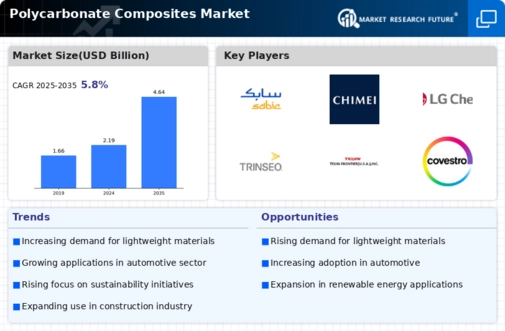Market Trends
Key Emerging Trends in the Polycarbonate Composites Market
The Polycarbonate Composites Market is dynamic and impacted by several variables. Due to its strength, impact resistance, and adaptability, polycarbonate composites are in demand throughout sectors. This market is driven by the use of lightweight materials in production. Polycarbonate composites can improve fuel efficiency and weight in automotive and aeronautical applications. Its strength and lightweight profile make it a popular choice in these fields.
The trend toward eco-friendly materials is another big one. Manufacturers are seeking performance-environmental solutions as environmental consciousness grows. These trends are supported by polycarbonate composites' recyclability and promise to reduce industrial carbon emissions. The polycarbonate composites market is likely to develop as decision-makers prioritize sustainability.
Technological advances also influence market trends. Continuous R&D has improved polycarbonate composite characteristics and expanded their applications. Advanced moulding and nanotechnology integration help create high-performance composites. These advancements meet the needs of many industries and provide new opportunities, pushing polycarbonate composite usage across diverse applications.
The construction sector also boosts the market. Polycarbonate composites can be used for roofing, panels, and structural parts. Modern construction projects favour the material's durability and aesthetics. Polycarbonate composites will become more popular as the construction industry adapts to new design and sustainability standards.
Global economic factors can influence market trends. Key economies' recovery and expansion affect polycarbonate composite demand across industries. Polycarbonate composites will remain a major materials industry participant as the market evolves and more sectors use them.









Leave a Comment